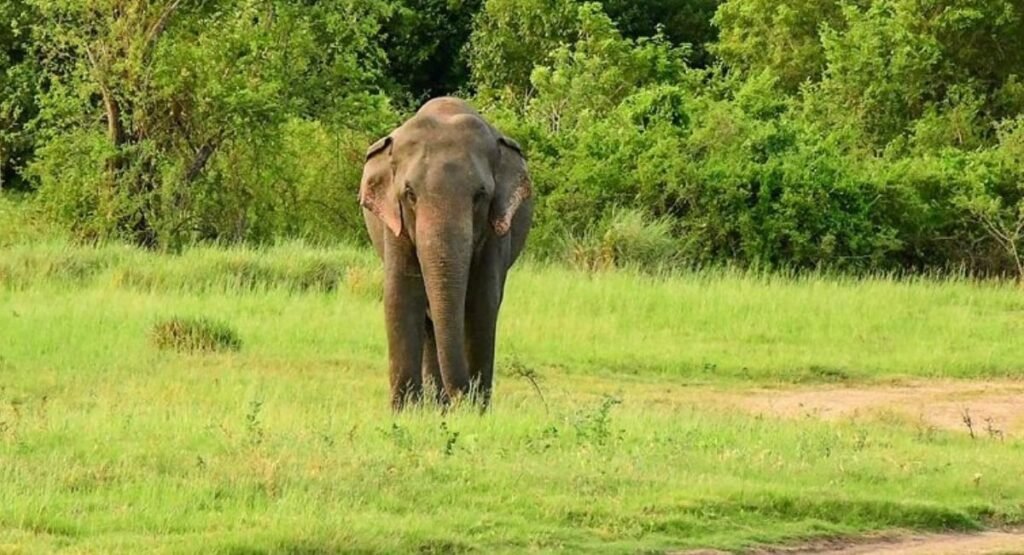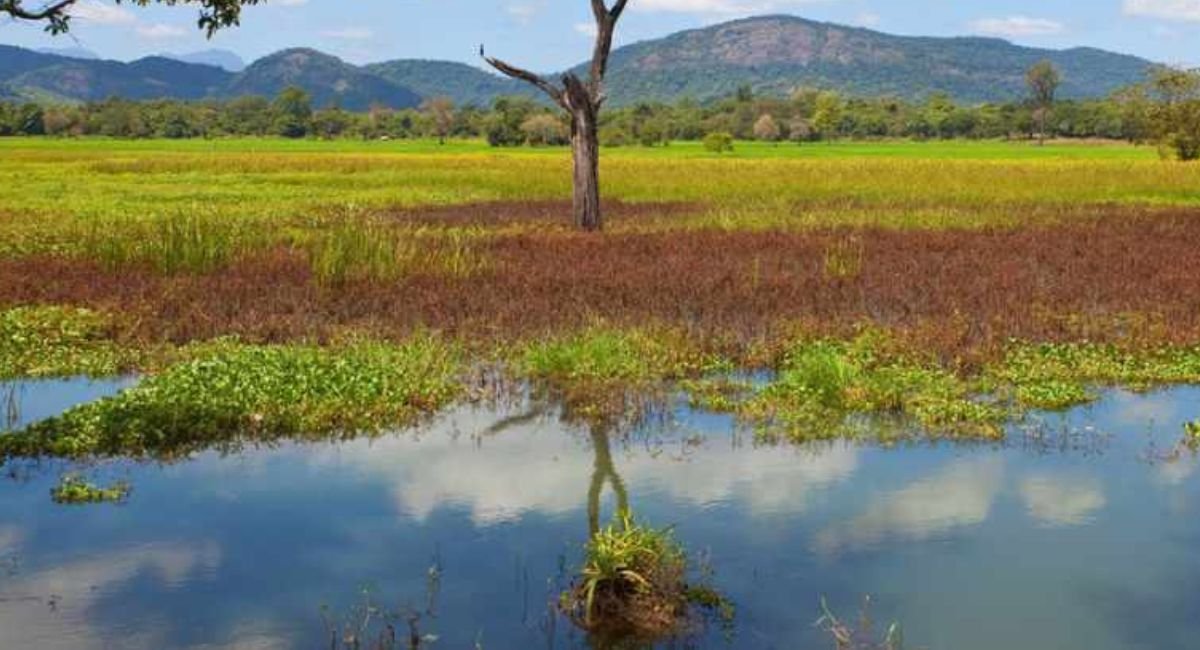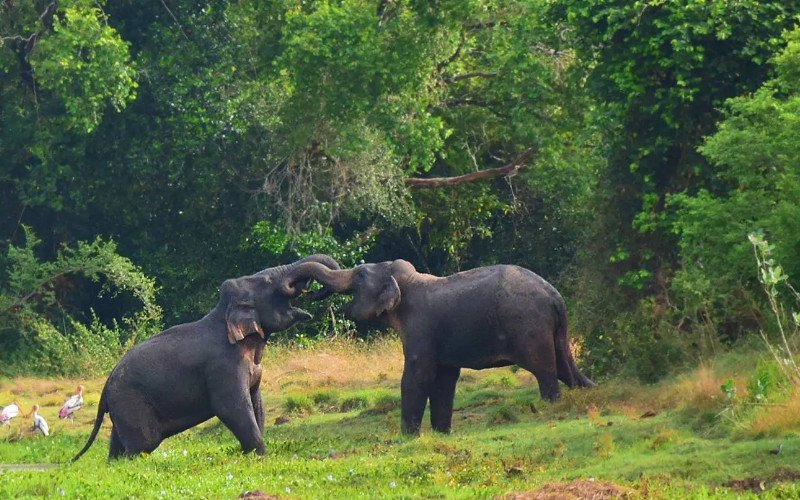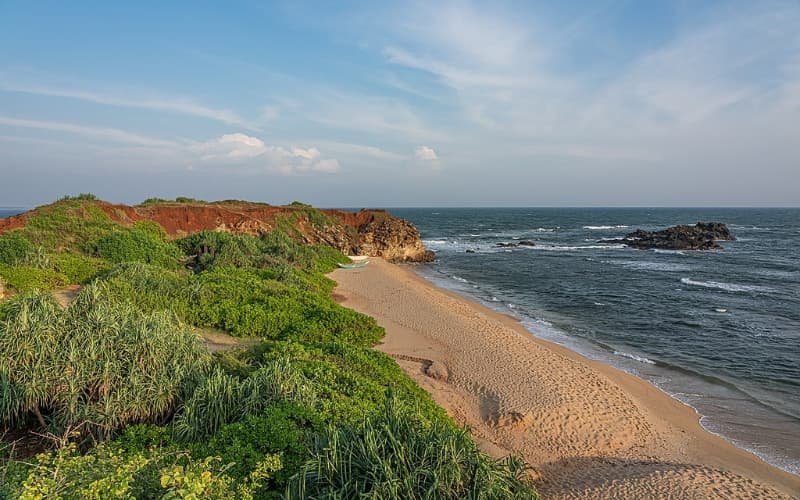Flood Plains National Park, a hidden gem in Sri Lanka’s extensive network of protected areas, serves as a critical component of the country’s ecological balance. Renowned for its role in water resource management and rich biodiversity, this park offers an unparalleled opportunity for visitors to explore its unique floodplain ecosystems and witness its abundant wildlife.
District and Province
Flood Plains National Park is located in the Polonnaruwa District within the North Central Province of Sri Lanka. Situated along the Mahaweli River basin, the park lies in the heart of Sri Lanka’s ancient agricultural landscapes.
Area Covered
The park spans approximately 17,350 hectares (173.5 square kilometers). It is characterized by diverse floodplain ecosystems, including wetlands, grasslands, riverine forests, and aquatic habitats, which are crucial for sustaining both wildlife and human communities.
Significance of Flood Plains National Park
- Hydrological Importance:
- The park serves as a natural flood regulator for the Mahaweli River, Sri Lanka’s longest river. Its wetlands and floodplains absorb excess water during heavy rains, mitigating floods downstream and replenishing groundwater reserves.
- Biodiversity Hotspot:
- Flood Plains National Park is home to a variety of wildlife, including elephants, leopards, sambar deer, water buffalo, and numerous bird species. Its wetlands also support aquatic life, such as fish and amphibians.
- The park is particularly important for migratory birds, making it a significant site for birdwatching.
- Role in Ancient Agriculture:
- The floodplains have historically supported Sri Lanka’s ancient irrigation systems, providing water for paddy fields and contributing to the country’s agricultural heritage.
History of Flood Plains National Park
Flood Plains National Park was declared a protected area in 1984 as part of the Mahaweli Development Project, the largest multi-purpose water management program in Sri Lanka. The park was established to safeguard the riverine ecosystems and ensure the sustainable use of the Mahaweli River’s water resources for irrigation, power generation, and human consumption.

How to Reach Flood Plains National Park
- By Air:
- The nearest airport is Bandaranaike International Airport in Colombo. From there, domestic flights to Sigiriya or road travel can connect visitors to the park.
- By Road:
- Flood Plains National Park is about 200 kilometers northeast of Colombo and can be accessed via the A9 highway. From Polonnaruwa, the park is just a short drive.
- By Rail:
- Trains to Polonnaruwa or nearby stations provide an alternative travel option, followed by a short drive to the park.
Travel Activities at Flood Plains National Park
- Wildlife Safaris:
- Jeep safaris are a popular way to explore the park, offering opportunities to spot elephants, crocodiles, and other wildlife in their natural habitats.
- Bird Watching:
- The park is a haven for bird enthusiasts, with species such as herons, kingfishers, and pelicans commonly seen. Migratory birds are best observed between November and March.
- Nature Walks and Photography:
- The floodplains, with their lush greenery, serene wetlands, and wildlife, provide excellent opportunities for nature walks and photography.
- Canoeing and Aquatic Exploration:
- Canoeing along the Mahaweli River and its tributaries offers a unique perspective of the park’s wetlands and aquatic ecosystems.
- Educational Eco-Tours:
- Guided eco-tours provide insights into the park’s role in water resource management and its ecological significance.
Conservation Challenges and Efforts
Flood Plains National Park faces challenges such as illegal fishing, habitat destruction, and human-wildlife conflicts. Conservation initiatives include habitat restoration, anti-poaching measures, and community engagement programs to promote sustainable practices.
Best Time to Visit
The ideal time to visit Flood Plains National Park is during the dry season, from May to September, when the floodplains are easier to navigate, and wildlife congregates around water sources.
Conclusion
Flood Plains National Park stands as a testament to the intricate relationship between nature and human civilization. From its crucial role in water resource management to its status as a biodiversity haven, the park offers visitors an opportunity to immerse themselves in a unique and vital ecosystem.
Whether you’re a nature lover, a wildlife enthusiast, or simply seeking tranquility in Sri Lanka’s wilderness, Flood Plains National Park promises an enriching and memorable experience. Plan to explore this essential part of the island’s natural heritage.
Best Tours near Polonnaruwa
Discover the best tours in Sri Lanka, where every journey unveils a new wonder. Explore ancient ruins, lush tea plantations, golden beaches, and vibrant wildlife. Experience the magic of this tropical paradise like never before!
Best Hotels near Polonnaruwa
Experience luxury and comfort at the best hotels in Sri Lanka. From serene beachfront resorts to charming hill-country retreats, enjoy world-class hospitality, stunning views, and unforgettable stays tailored to your every need.
Flight Booking
Looking to take off on your next adventure? Book your flights with ease and confidence! Whether it’s a dream vacation, a quick getaway, or a business trip, our flight booking service offers unbeatable deals, flexible options, and seamless convenience. Compare airlines, find the best routes, and secure your tickets in just a few clicks. With 24/7 customer support and exclusive discounts, the skies have never been friendlier. Start your journey today and make every mile memorable! ✈️




